


SMT Top Networking Circle
A professional circle for sharing networking resources and achieving career advancement.

New Platform 2020
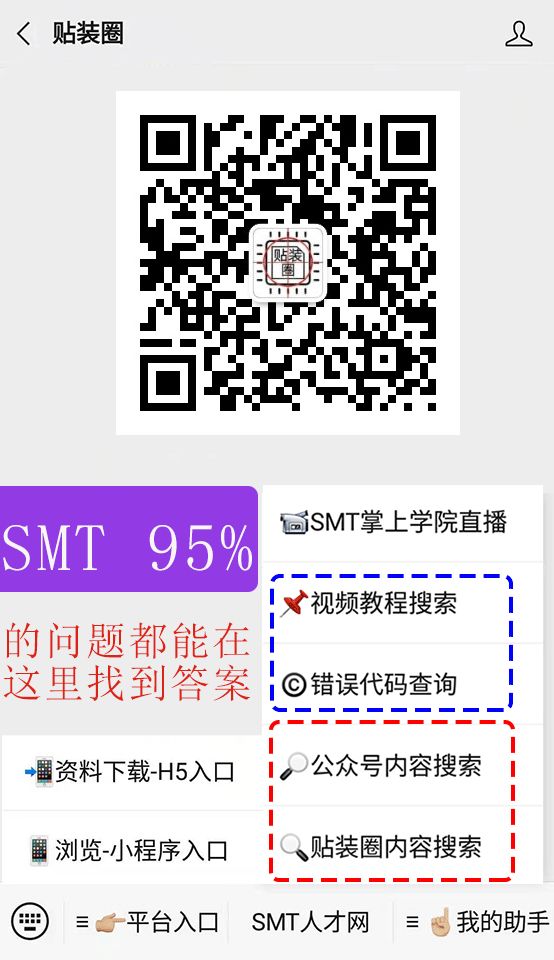

1. FPC Preprocessing
FPC boards are relatively soft and are generally not vacuum packaged when leaving the factory. They are prone to absorb moisture from the air during transportation and storage, so they need to undergo a pre-baking process before SMT placement to slowly force out the moisture. Otherwise, under the high-temperature impact of reflow soldering, the moisture absorbed by the FPC can quickly vaporize into steam, causing delamination, bubbling, and other defects.
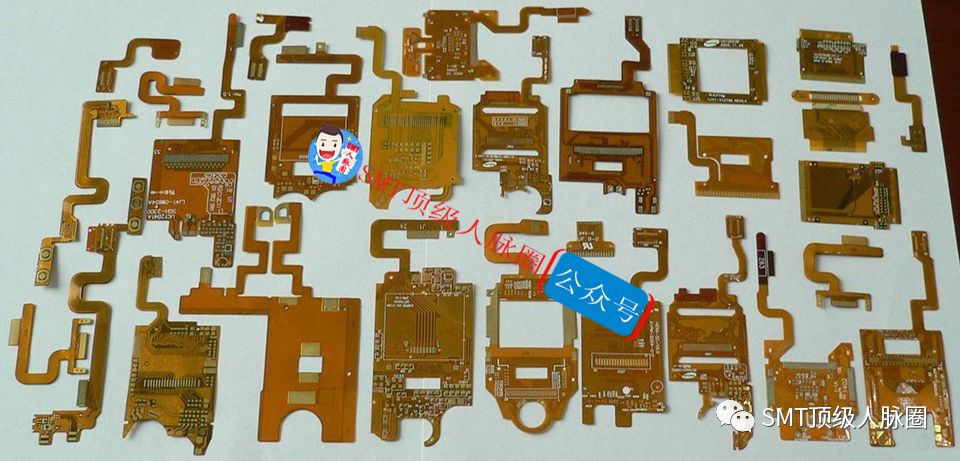
The pre-baking conditions are generally a temperature of 80-100°C for 4-8 hours. In special cases, the temperature can be raised to above 125°C, but the baking time must be correspondingly shortened. Before baking, a small sample test must be conducted to determine whether the FPC can withstand the set baking temperature, and it is advisable to consult the FPC manufacturer for suitable baking conditions. During baking, the FPC should not be stacked too much; 10-20 PNL is appropriate. Some FPC manufacturers place a paper sheet between each PNL for isolation, and it is necessary to confirm whether this isolation paper can withstand the set baking temperature. If not, the isolation paper should be removed before baking. The baked FPC should show no obvious discoloration, deformation, or warping, and must pass inspection by IPQC before being placed on the line.
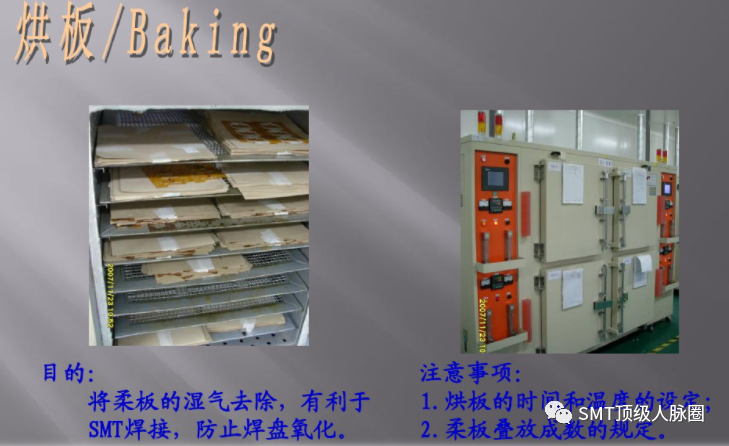
2. Production of Dedicated Carriers
Based on the CAD files of the circuit board, the hole positioning data of the FPC is read to manufacture high-precision FPC positioning templates and dedicated carriers, ensuring that the diameter of the positioning pins on the template matches the hole diameters on the carrier and the FPC. Many FPCs are not of uniform thickness due to the need to protect certain circuits or design reasons; some areas are thicker while others are thinner, and some even have reinforced metal plates. Therefore, the junctions between the carrier and the FPC need to be processed and ground according to the actual situation to ensure that the FPC is flat during printing and mounting. The carrier material must be lightweight, high-strength, low heat absorption, and quick to dissipate heat, with minimal warping and deformation after multiple thermal shocks. Common carrier materials include synthetic stone, aluminum plates, silicone plates, and special high-temperature magnetized steel plates.
3. Production Process
Here, we will detail the key points of FPC SMT using a standard carrier as an example. When using silicone plates or magnetic fixtures, fixing the FPC is much easier, eliminating the need for tape, while the key points of the processes such as printing, mounting, and soldering remain the same.

1. Fixing the FPC:
Before SMT, the FPC must be accurately fixed to the carrier. It is particularly important to minimize the storage time between fixing the FPC to the carrier and proceeding with printing, mounting, and soldering. There are two types of carriers: with positioning pins and without. For carriers without positioning pins, they must be used in conjunction with a positioning template that has pins. First, the carrier is placed over the positioning pins of the template, allowing the pins to protrude through the positioning holes on the carrier. The FPC is then placed over the exposed pins one by one and secured with tape, after which the carrier is separated from the FPC for printing, mounting, and soldering. For carriers with positioning pins, several spring positioning pins, approximately 1.5mm long, are already fixed on the carrier, allowing the FPC to be placed directly onto the spring pins and secured with tape. During the printing process, the spring pins can be fully pressed into the carrier by the stencil without affecting the printing quality.
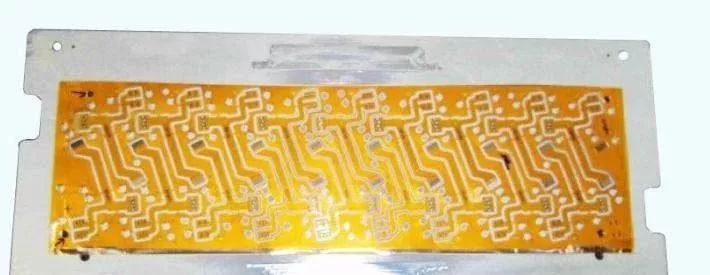
Method 1 (Single-Sided Tape Fixing): Use thin, high-temperature resistant single-sided tape to secure the four edges of the FPC to the carrier, preventing any shifting or warping. The tape’s adhesion should be moderate, allowing for easy removal after reflow soldering without leaving residue on the FPC. If using an automatic tape dispenser, it can quickly cut uniform lengths of tape, significantly improving efficiency, reducing costs, and minimizing waste.

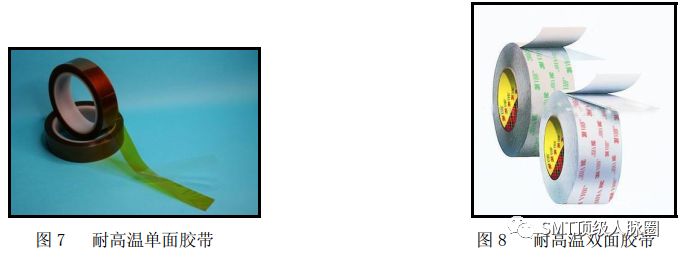
Method 2 (Double-Sided Tape Fixing): First, apply high-temperature double-sided tape to the carrier, achieving results similar to silicone plates, and then attach the FPC to the carrier. It is crucial to ensure that the tape’s adhesion is not too high; otherwise, it may tear the FPC during removal after reflow soldering. After repeated passes through the oven, the tape’s adhesion will gradually decrease, and it must be replaced immediately when it can no longer reliably hold the FPC. This workstation is critical for preventing contamination of the FPC, and operators should wear finger cots. Before reusing the carrier, it should be properly cleaned, either with a non-woven cloth dipped in cleaning solution or with an anti-static adhesive roller to remove surface dust and solder balls. Care should be taken not to apply too much force when handling the FPC, as it is fragile and can easily crease or break.
2. Solder Paste Printing for FPC:
FPC does not have specific requirements for solder paste composition; the size of solder balls and metal content should be based on whether there are fine-pitch ICs on the FPC. However, FPC has high requirements for solder paste printing performance; the solder paste should have excellent thixotropic properties, allowing for easy printing and release while firmly adhering to the FPC surface without causing issues like poor release, clogging of stencil apertures, or collapsing after printing.
Since the FPC is mounted on the carrier, and the positioning tape used on the FPC makes its surface uneven, the printing surface of the FPC cannot be as flat and uniform in thickness and hardness as that of a PCB. Therefore, a metal squeegee should not be used; instead, a polyurethane squeegee with a hardness of 80-90 degrees should be employed. It is best for the solder paste printer to have an optical positioning system; otherwise, the printing quality may be significantly affected. Although the FPC is fixed to the carrier, there will always be slight gaps between the FPC and the carrier, which is the biggest difference from rigid PCBs. Therefore, the setting of equipment parameters will also greatly impact the printing results.
The printing workstation is also critical for preventing contamination of the FPC, and operators should wear finger cots while keeping the workstation clean, frequently wiping the stencil to prevent solder paste from contaminating the FPC’s gold fingers and gold-plated buttons.
3. SMD Mounting for FPC:
Depending on the product characteristics, component quantity, and mounting efficiency, medium to high-speed pick-and-place machines can be used for mounting. Since each FPC has optical MARK positioning marks, the SMD mounting process on the FPC is not much different from that on a PCB. It is important to note that although the FPC is fixed to the carrier, its surface cannot be as flat as that of a rigid PCB, and there will definitely be local gaps between the FPC and the carrier. Therefore, the height of the nozzle drop, blowing pressure, etc., need to be precisely set, and the nozzle movement speed should be reduced. Additionally, since FPCs are often produced in panels, and their yield is relatively low, it is normal for the entire panel to contain some defective pieces, which requires the pick-and-place machine to have BAD MARK recognition capabilities. Otherwise, production efficiency will be significantly reduced when producing panels that are not entirely good.
4. Reflow Soldering for FPC:
Forced hot air convection infrared reflow soldering ovens should be used to ensure that the temperature on the FPC changes uniformly, reducing the occurrence of soldering defects. If single-sided tape is used, since it only secures the four edges of the FPC, the middle part may deform under hot air, causing pads to tilt, and molten solder (liquid solder at high temperatures) may flow, leading to cold solder joints, bridging, and solder balls, resulting in a higher defect rate.
1) Temperature Curve Testing Method:
Due to the different heat absorption characteristics of the carrier and the different types of components on the FPC, the rate of temperature rise during reflow soldering varies, and the amount of heat absorbed also differs. Therefore, carefully setting the temperature curve of the reflow soldering oven greatly impacts soldering quality. A reliable method is to place two boards with FPCs on either side of the test board, while components are mounted on the FPC of the test board. High-temperature solder wire is used to solder the temperature probe to the test point, and high-temperature tape is used to secure the probe wires to the carrier. Care must be taken not to cover the test point with the high-temperature tape. The test points should be selected near the solder joints and QFP pins at the edges of the carrier, as such test results better reflect the actual situation.
2) Setting the Temperature Curve:
During oven temperature debugging, due to the poor temperature uniformity of the FPC, it is best to use a temperature curve method of heating/holding/reflow, making it easier to control the parameters in each temperature zone. Additionally, the impact of thermal shock on the FPC and components should be minimized. Based on experience, it is best to set the oven temperature to the lower limit of the solder paste technical requirements, and the wind speed of the reflow oven is generally set to the lowest speed that the oven can achieve, ensuring that the reflow oven chain is stable and does not shake.
5. Inspection, Testing, and Depaneling of FPC:
Since the carrier absorbs heat in the oven, especially aluminum carriers, the temperature is relatively high when they exit the oven. Therefore, it is best to add forced cooling fans at the oven exit to help cool down quickly. At the same time, operators should wear heat-resistant gloves to avoid burns from the high-temperature carrier. When removing the completed soldered FPC from the carrier, force should be applied evenly, and excessive force should not be used to avoid tearing or creasing the FPC.
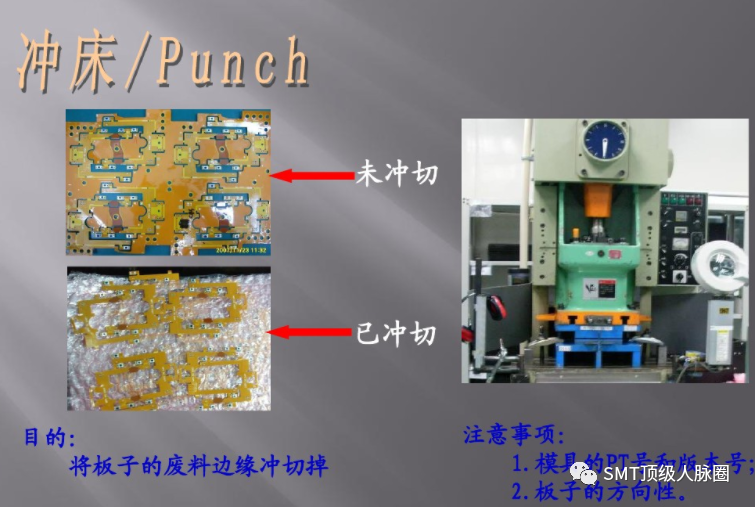
The removed FPC should be visually inspected under a magnifying glass of 5x or more, focusing on checking for residual glue, discoloration, solder on gold fingers, solder balls, cold solder joints, bridging, and other issues. Due to the uneven surface of the FPC, the false rejection rate of AOI is high, so FPCs are generally not suitable for AOI inspection. However, with the help of specialized testing fixtures, FPCs can complete ICT and FCT testing.
Since FPCs are often produced in panels, it may be necessary to depanel before performing ICT and FCT testing. Although tools such as blades and scissors can also complete the depaneling process, the efficiency and quality of the work are low, and the scrap rate is high. For mass production of irregular FPCs, it is recommended to create dedicated FPC stamping depaneling molds for stamping separation, which can significantly improve work efficiency, and the edges of the stamped FPC will be neat and beautiful. The internal stress generated during stamping is very low, effectively avoiding solder joint cracking.
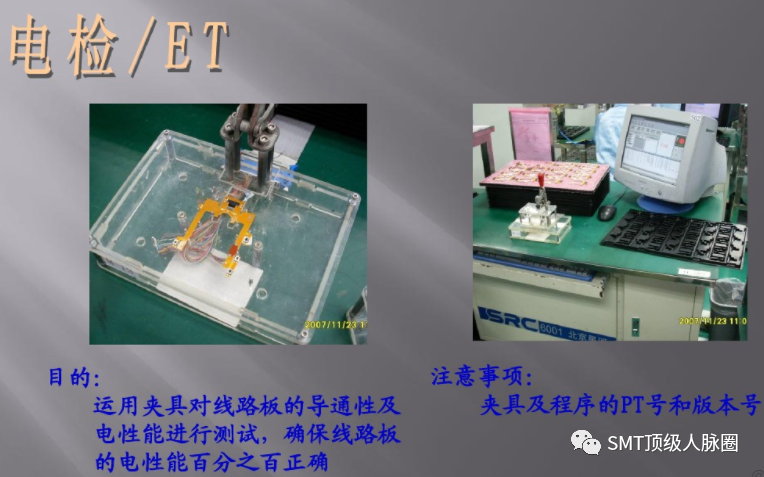
In the assembly and soldering process of PCBA flexible electronics, the precise positioning and fixing of the FPC is crucial. The key to effective fixing is the production of suitable carriers. Next are the pre-baking, printing, mounting, and reflow soldering of the FPC. Clearly, the SMT process for FPCs is much more challenging than for rigid PCBs, so precise setting of process parameters is necessary. Additionally, strict production process management is equally important; it is essential to ensure that operators strictly follow every regulation in the SOP, and line engineers and IPQC should strengthen inspections to promptly identify abnormalities on the production line, analyze the causes, and take necessary measures to control the defect rate of the FPC SMT production line to within dozens of PPM.
In the PCBA production process, many machines and equipment are required to complete the assembly of a board, and the quality level of a factory’s machinery directly determines its manufacturing capability.
The basic equipment required for PCBA production includes solder paste printers, pick-and-place machines, reflow soldering ovens, AOI inspection machines, component lead cutting machines, wave soldering machines, solder pots, cleaning machines, ICT testing fixtures, FCT testing fixtures, and aging test racks. Different scales of PCBA processing plants will have varying equipment configurations.
4. PCBA Production Equipment
1. Solder Paste Printer
Modern solder paste printers generally consist of components for loading the board, applying solder paste, printing, and transporting the circuit board. Its working principle is to first fix the circuit board to be printed on the printing positioning table, and then the left and right squeegees of the printer apply solder paste or red glue through a stencil onto the corresponding pads. For uniformly printed PCBs, they are transferred to the pick-and-place machine for automatic mounting.
2. Pick-and-Place Machine
The pick-and-place machine, also known as the surface mount system, is positioned after the solder paste printer on the production line. It accurately places surface mount components onto the PCB pads using a moving placement head. It can be either manual or fully automatic.
3. Reflow Soldering
The reflow soldering oven has a heating circuit that heats air or nitrogen to a sufficiently high temperature and blows it onto the circuit board with components already mounted, melting the solder on both sides of the components to bond them to the main board. The advantages of this process include easy temperature control, prevention of oxidation during soldering, and easier control of manufacturing costs.
4. AOI Inspection Machine
AOI (Automatic Optical Inspection) is a device that detects common defects encountered during soldering production based on optical principles. AOI is a rapidly emerging new testing technology, and many manufacturers have introduced AOI testing equipment. During automatic detection, the machine automatically scans the PCB with a camera, collects images, and compares the tested solder joints with qualified parameters in the database. Through image processing, defects on the PCB are identified and displayed/marked on a monitor for maintenance personnel to rectify.
5. Component Lead Cutting Machine
This machine is used to cut and deform the leads of through-hole components.
6. Wave Soldering
Wave soldering involves direct contact of the soldering surface of the plug-in board with high-temperature liquid solder to achieve soldering. The high-temperature liquid solder maintains a sloped surface and is made to form waves by special devices, hence the name “wave soldering”. The main material used is solder bars.
7. Solder Pot
Generally, a solder pot refers to a soldering tool used in electronic soldering. It provides good consistency for soldering discrete component circuit boards, is easy to operate, quick, and highly efficient, making it a good helper for your production processing.
8. Cleaning Machine
This machine is used to clean PCBA boards, removing residues left after soldering.
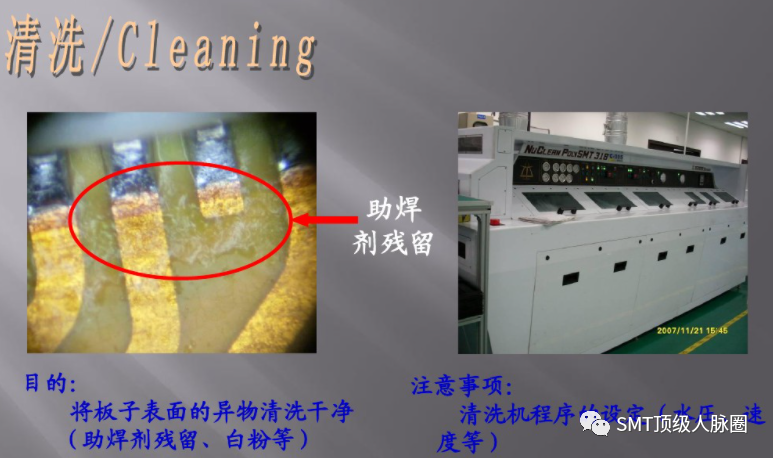
9. ICT Testing Fixture
ICT testing primarily involves testing probes contacting the test points laid out on the PCB to detect open circuits, short circuits, and the soldering status of all components on the PCBA.
10. FCT Testing Fixture
FCT (Functional Testing) refers to providing a simulated operating environment (stimulus and load) for the test target board (UUT: Unit Under Test), allowing it to operate in various design states to obtain parameters for verifying the functionality of the UUT. In simple terms, it involves applying appropriate stimuli to the UUT and measuring whether the output response meets the requirements.
11. Aging Test Rack
The aging test rack can batch test PCBA boards, simulating user operations over extended periods to identify problematic PCBA boards.
PCBA outsourcing refers to the practice of PCBA processing manufacturers outsourcing PCBA orders to other capable PCBA processing manufacturers. What are the general requirements for PCBA outsourcing?
1. Bill of Materials
Components should be inserted or mounted strictly according to the bill of materials, PCB silkscreen, and outsourcing processing requirements. If there are discrepancies between the materials and the bill, PCB silkscreen, or if there are contradictions with process requirements, or if the requirements are vague and cannot be executed, timely contact our company to confirm the correctness of the materials and process requirements.
2. Anti-Static Requirements
1. All components should be treated as electrostatic sensitive devices.
2. All personnel in contact with components and products should wear anti-static clothing, anti-static wristbands, and anti-static shoes.
3. During the entry and storage of raw materials, electrostatic sensitive devices should be packaged in anti-static packaging.
4. During operations, use anti-static work surfaces, and store components and semi-finished products in anti-static containers.
5. Soldering equipment must be reliably grounded, and soldering irons should be of anti-static type, with testing required before use.
6. Semi-finished PCB storage and transportation should use anti-static boxes, with anti-static pearl cotton as isolation material.
7. For unencased complete machines, use anti-static packaging bags.
3. Component Appearance Marking and Insertion Direction Regulations
1. Polarized components should be inserted according to polarity.
2. Components with silkscreen on the side (such as high-voltage ceramic capacitors) should be inserted vertically with the silkscreen facing right; when inserted horizontally, the silkscreen should face down. Components with silkscreen on the top (excluding surface mount resistors) should have the text direction aligned with the PCB silkscreen when inserted horizontally; when inserted vertically, the text should face right.
3. For resistors inserted horizontally, the tolerance color band should face right; when inserted vertically, the tolerance color band should face down; when inserted vertically, the tolerance color band should face the board surface.
4. Soldering Requirements
1. The height of the leads of inserted components on the soldering surface should be 1.5-2.0mm. Surface mount components should lie flat on the board surface, with solder joints smooth and slightly arched, and the solder should exceed 2/3 of the lead height but not exceed the lead height. Insufficient solder, ball-shaped solder joints, or solder covering the surface mount components are all defects.
2. Solder joint height: The solder should climb the lead height of single-sided boards to no less than 1mm, and for double-sided boards, no less than 0.5mm, and should be visible through the solder.
3. Solder joint shape: Should be conical and cover the entire pad.
4. Solder joint surface: Smooth, bright, with no black spots, flux residues, or other debris, and no burrs, pits, voids, or exposed copper defects.
5. Solder joint strength: Should be adequately wetted to the pad and lead, with no cold solder or false solder.
6. Solder joint cross-section: The leads should be cut as close to the solder as possible, with no cracks in the solder at the contact surface. There should be no burrs or hooks at the cross-section.
7. Socket soldering: The socket should be inserted into the board from the bottom, with the position and direction correct. After soldering, the bottom should not be more than 0.5mm above the board, and the body should not be skewed beyond the silkscreen frame. Rows of sockets should also be kept neat, with no front-back misalignment or uneven heights.
5. Transportation
To prevent damage to the PCBA during transportation, the following packaging should be used:
1. Container: Anti-static turnover boxes.
2. Isolation material: Anti-static pearl cotton.
3. Placement spacing: There should be a distance of more than 10mm between PCBs and between PCBs and the container.
4. Placement height: There should be more than 50mm of space from the top of the turnover box to ensure that the turnover box does not press down on the power supply, especially for power supplies with wires.
6. Cleaning Requirements
The board surface should be clean, with no solder balls, component leads, or stains. In particular, there should be no visible residues from soldering at the solder joints on the plug-in surface. During cleaning, the following components should be protected: wires, connection terminals, relays, switches, polyester capacitors, and other easily corroded components, and relays should not be cleaned with ultrasonic cleaning.
7. No components should extend beyond the edges of the PCB after all components are installed.
8. During the oven process, due to the washing of the leads of plug-in components by the solder flow, some plug-in components may tilt after soldering, causing the component body to extend beyond the silkscreen frame. Therefore, it is required that the rework personnel correct them appropriately after the soldering in the solder pot.

